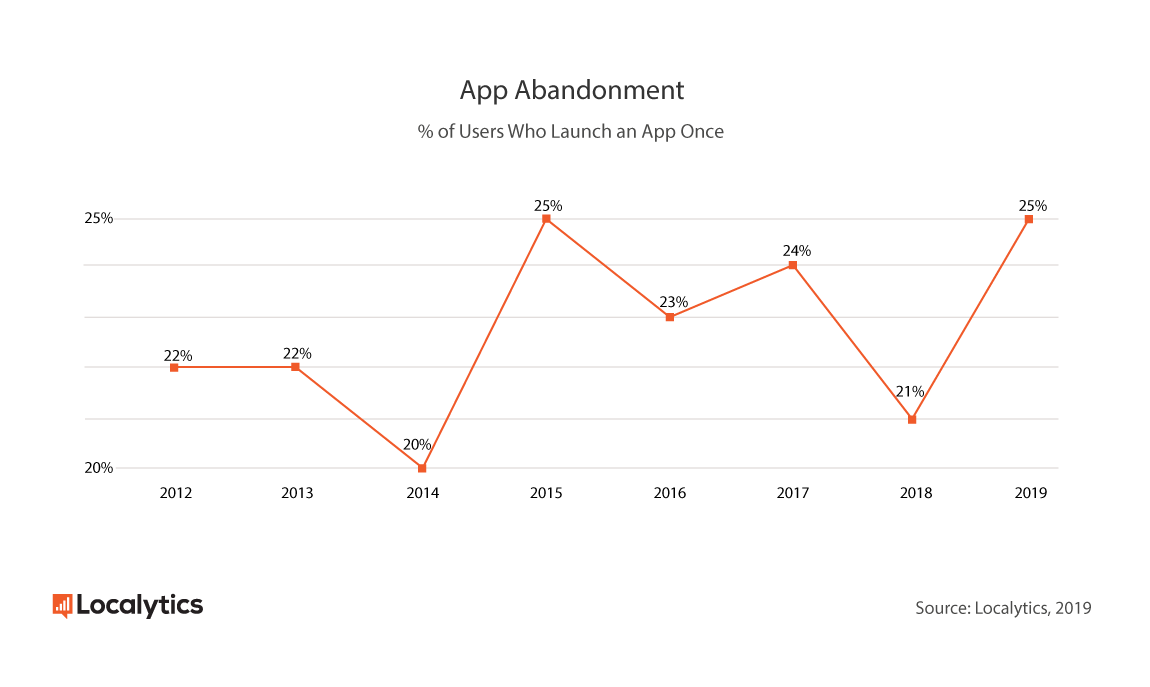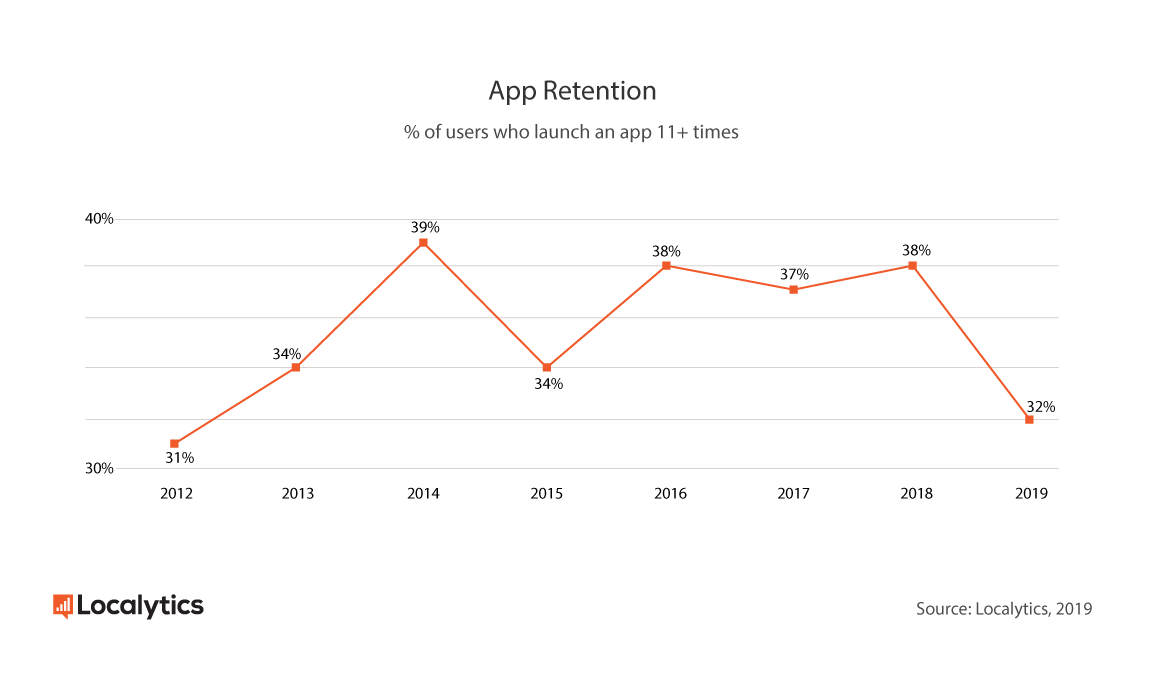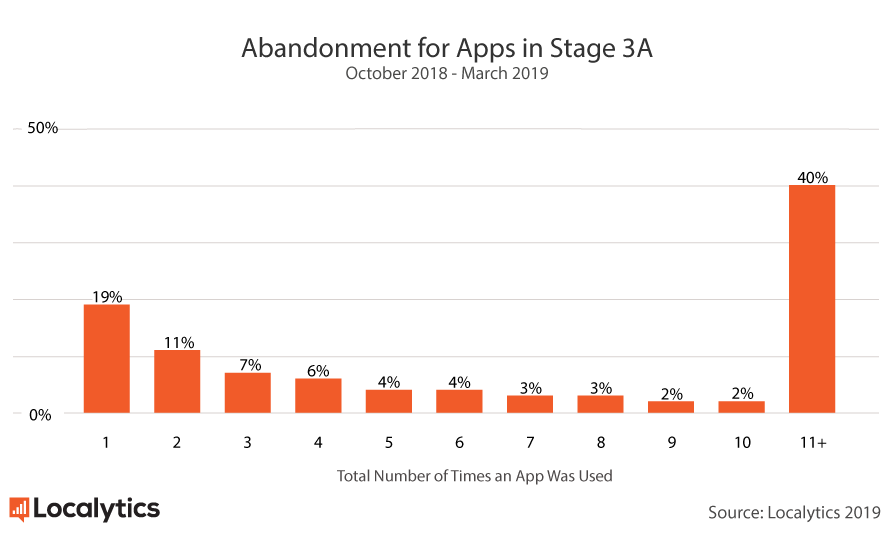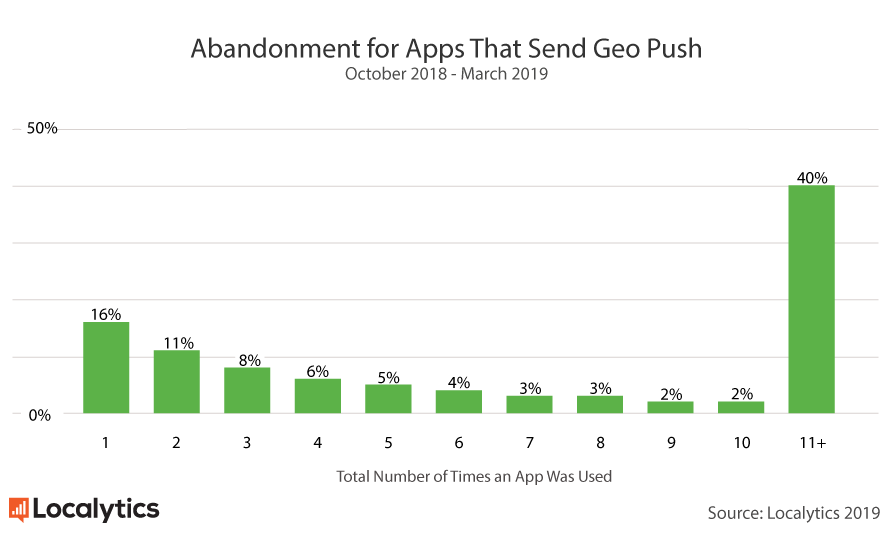Times are changing. Apps have become a mainstay for consumers and an effective way for brands to engage with them. That being said, the fight rages on to keep users coming back. Long-term retention has improved quite significantly over the past few years, but that doesn’t necessarily mean that apps are succeeding in the short-term.
Today, we’re providing an update to our app user retention study, which measures loyalty and abandonment across our user base of 12,000 apps. But, first, our key definitions:
- User Retention: The percentage of users who return to an app more than 10 times.
- User Abandonment: The percentage of users who abandon an app after one session.
App abandonment rose to its 2015 level
In fact, we found that app abandonment actually increased this year, reaching the same height as it did in 2015. 
Increased abandonment is normally an unfortunate side effect of not leading users to value quickly enough after they open an app. Much of what keeps them coming back for more is their initial interest, which relies on onboarding, in-app messaging, and encouraging push opt-in. Try some of these strategies out next time you consider ways to increase retention.
Similarly, user retention after 10 sessions has fallen somewhat, dipping to a low of 32%.

This result is somewhat surprising, since we have recently seen increased retention in the form of industry benchmarks. However, the data that we sample for benchmarks relies on apps that have been designated to fall under certain common app categories, whereas for our retention studies we look at all apps in our database. In addition, users who continue to launch an app for three months after their initial visit likely spend many more than eleven sessions in that app. That is, 3-month retention is very long-term, while 11+ session retention is somewhere between short-term and medium-term. The two metrics are therefore not apples to apples, but something like bananas to cucumbers.
While not a huge decrease, we know that app marketers can improve their performance. Ways to increase long-term retention include ensuring your messaging is personalized, gently nudging app users with notifications showing offers and activities in your app, and diversifying channels so that the context of your messaging varies. It all comes down to making your users feel like unique individuals in an individualized world.
Apps in personalization stage 3A see abandonment drop to 19%
Based on our Stages of Personalization methodology, we defined apps in the first part of the third stage as apps that use a great deal of dynamic messaging and target the majority of campaigns on a profile attribute instead of broadcasting messages to their entire user base. We find that apps that fall into stage 3A retain users at higher rates than average.

App abandonment after one use drops to 19% from 25%, while the number of users who stick around for 11 or more sessions leaps up to 40% from 32%. Although this is not a drastic difference, it’s worth noting for marketers looking to obtain superior results from their messaging. App users who feel listened to based on their data are much more likely to continue launching an app. In fact, apps that send messages that are targeted based on simply profile or profile and behavioral data and built on dynamic content see user retention within 28 days of receiving the message range from 61% to 74%. Compare this to apps that send mostly broadcast campaigns with no specific message-building strategies: They see 28 day retention cap out at 49%. See our Stages of Personalization calculator in action in order to calculate these numbers here: https://www.localytics.com/personalization/.
Diversified messaging comes out on top
Similarly, diversifying messaging channels provides an experience that is highly relevant and timely. Take, for instance, a push message sent to a user who enters a specific location. Apps that send messages based on this data see even lower abandonment rates and higher medium-term retention.

This time abandonment drops to a new low of 16% compared to the average of 25%, while loyalty reaches 40% compared to an average of 32%. This represents a 36% decrease in abandonment and a 25% increase in loyalty. Location-based messaging has proven to be effective in many other ways too – namely increased conversion and open rates. It’s definitely to marketers’ advantage to utilize location data to appeal to their consumers.
A small upfront effort for a huge payoff
While we hope to see improvement over time, the news is not all bad. App marketers can improve their app’s retention using some of our recommended, tried-and-true methods. The situation is less than ideal at the moment, but it’s entirely within marketers’ control to put in a small amount of upfront effort for a huge payoff in the form of customer loyalty and satisfaction.
Methodology
Localytics is the leading mobile engagement platform across more than 2 billion devices and 12,000 mobile and web apps. Localytics processes 3 billion data points daily. For this analysis, Localytics measured the percentage of users who only used an app once as well as the users who returned multiple times. For the Stages of Personalization analysis, we compared the percentage of users who did or did not return to apps that currently fall into stage 3A of our proprietary methodology, which uses K-Means algorithmic clustering to bucket customers into different stages of personalized marketing. For the geo push analysis, we examined the percentage of users who did or did not return to apps that sent a location-based push in the timeframe. The timeframe for this study was October 1st 2018 – March 31st 2019.

